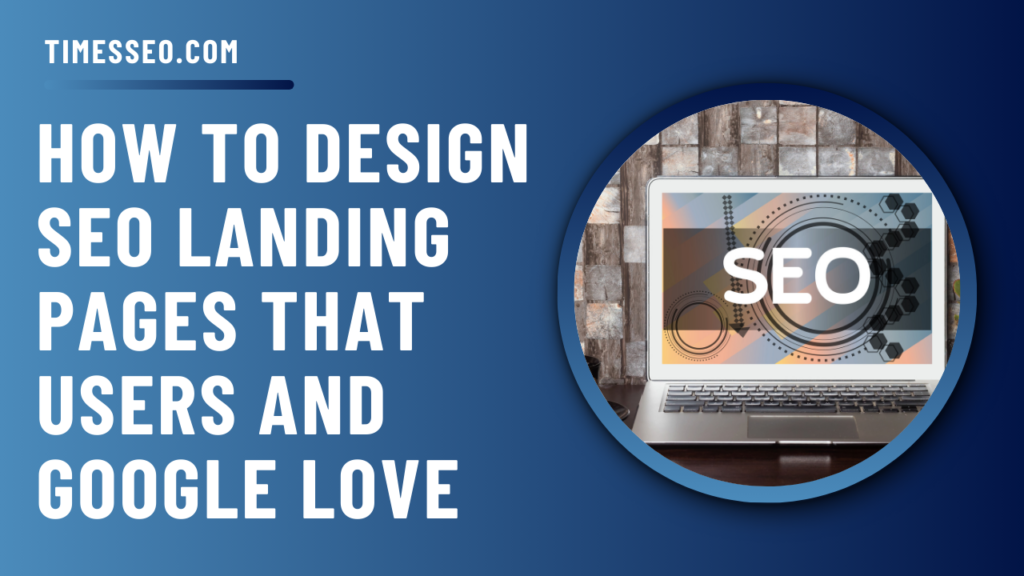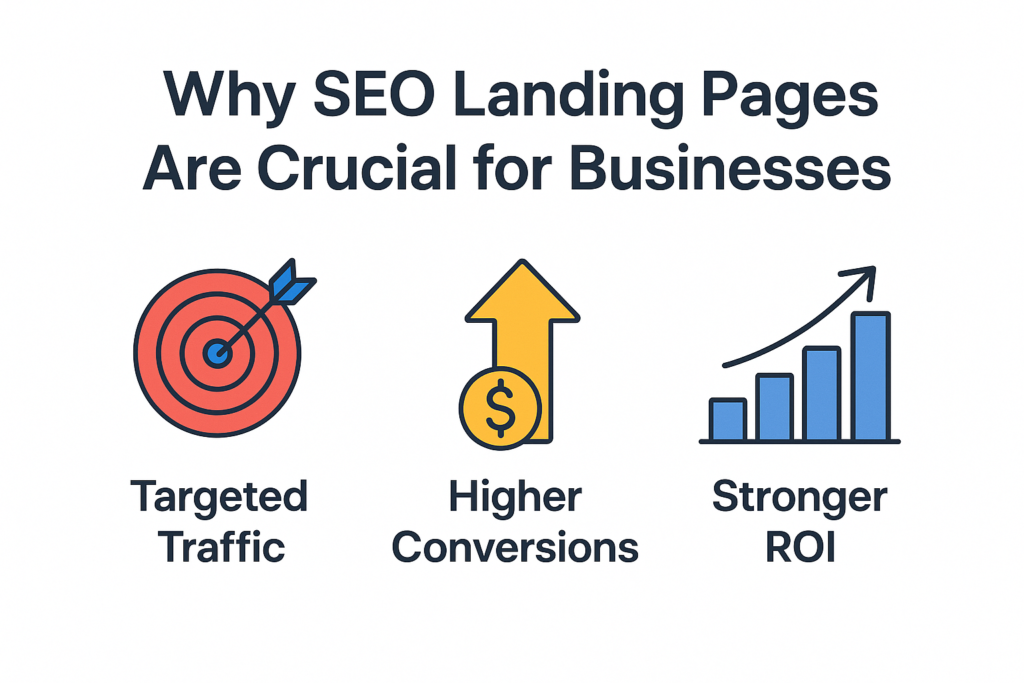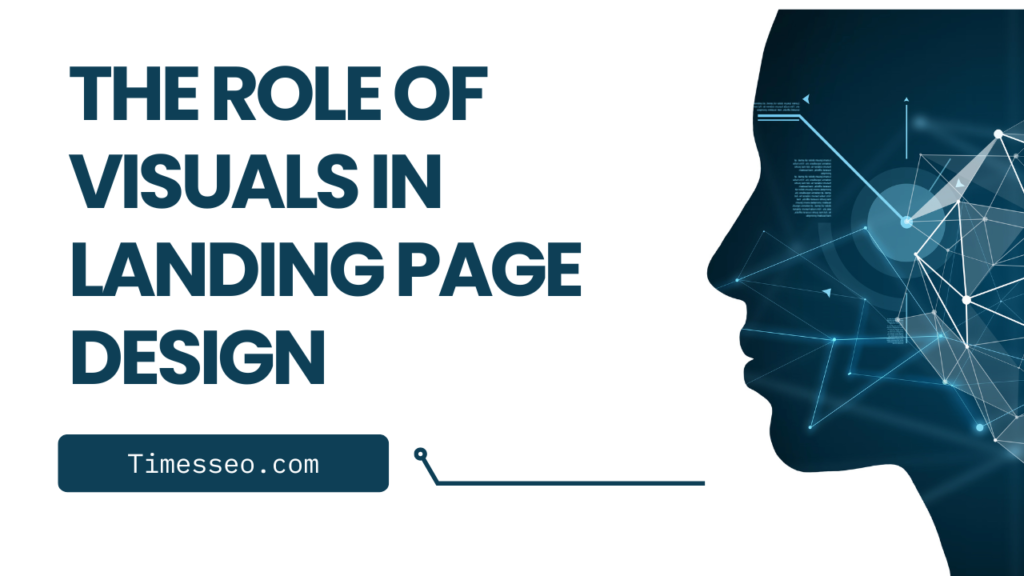
How to Design SEO Landing Pages That Users and Google Love
Discover how to create SEO landing pages that not only rank higher on Google but also engage and convert your visitors. This guide covers proven strategies for design, content, and optimization to help you build landing pages that both users and search engines love.
Table of Contents
Introduction
Have you ever clicked on a landing page that looked amazing but didn’t show up on Google? Or maybe one that ranked high but felt impossible to read? That’s the struggle—balancing SEO and user experience. If you want landing pages that rank well and convert visitors, you need to design them in a way that both Google and humans love.
In this article, we’ll explore how to build SEO landing pages that drive traffic, keep users engaged, and turn clicks into customers.
What is an SEO Landing Page?
An SEO landing page is a webpage designed specifically to attract organic traffic from search engines while converting that traffic into leads or sales. Unlike a blog post, which informs, or a homepage, which introduces, a landing page is laser-focused on a single goal—whether that’s signing up for a newsletter, downloading an eBook, or making a purchase.
Why SEO Landing Pages Are Crucial for Businesses
Targeted Traffic – They bring in users actively searching for your solution.
Higher Conversions – Unlike generic web pages, they’re tailored for action.
Stronger ROI – With the right setup, they provide consistent, scalable results.
Core Elements of a Successful SEO Landing Page
- A Killer Headline (H1): Grabs attention instantly.
- Engaging Subheadings: Breaks content into digestible sections.
- A straightforward CTA helps direct visitors effortlessly to the next step.
Think of your landing page as a sales pitch—headline is the hook, content builds trust, and CTA seals the deal.
Keyword Research for Landing Pages
Good landing pages don’t just guess—they target user intent. Use long-tail keywords like “best SEO landing page design for lead generation” instead of just “landing page”. This helps attract users who are ready to act, not just browse.
On-Page SEO Best Practices
- Optimize title tags and meta descriptions for clicks.
- Maintain header hierarchy (H1 → H2 → H3).
- Always add alt text for images—it’s good for accessibility and SEO.
Design Principles for User-Friendly Landing Pages
Google loves fast, mobile-friendly, clean designs. Users love them too. Focus on:
- Mobile responsiveness – 60%+ of traffic is mobile.
- Page speed optimization – Nobody waits for slow pages.
- Readable layout – Short paragraphs, bullet points, white space.
Content Strategy for SEO Landing Pages
The golden rule? Write for people first, Google second.
- Use storytelling to build connections.
- Answer user questions clearly.
- Avoid keyword stuffing—it kills trust and hurts rankings.
The Role of Visuals in Landing Page Design
A wall of text is boring. Use:
- Infographics to explain data.
- Videos for quick engagement.
- Images that align with your brand.
But remember: every visual should serve a purpose, not just decorate.
Creating High-Converting CTAs
The secret to CTAs? Clarity and urgency.
Instead of “Submit,” try:
- “Get My Free Guide”
- “Start Saving Today”
Place CTAs above the fold and at strategic intervals.
Trust-Building Elements
People won’t convert if they don’t trust you. Add:
- Testimonials & Reviews – Social proof builds credibility.
- Trust Badges – Security seals and certifications boost confidence.
Internal and External Linking Strategy
- Internal links keep users exploring your site.
- External links to authority sources improve credibility in Google’s eyes.
Technical SEO for Landing Pages
- Use schema markup to help Google understand content.
- Ensure for user trust.
- Fix crawl errors regularly.
Common Mistakes to Avoid in SEO Landing Page Design
- Over-optimizing with too many keywords.
- Using pop-ups that disrupt UX.
- Neglecting mobile users.
Conclusion
Designing SEO landing pages isn’t about choosing between Google or users. It’s about pleasing both. By combining smart SEO practices with engaging design, you can create pages that attract traffic, build trust, and drive conversions.
Remember, a landing page serves as your digital salesperson rather than just another webpage. Treat it like one.
Frequently Asked Questions
Around 1,000–2,000 words, depending on the topic and user intent.
At least every 6–12 months to stay relevant.
It’s best to focus on one primary keyword and a few secondary ones.
Yes—optimized visuals improve engagement and SEO.
Yes. SEO pages should target organic traffic, while ad landing pages can be more promotional.
Table of Contents
Popular Posts
-
 Affordable Technical SEO Audit for Small Business: A Complete Guide26 Jun 2025 Blog
Affordable Technical SEO Audit for Small Business: A Complete Guide26 Jun 2025 Blog -
 How to Get an Affordable Technical SEO Audit for Small Business27 Jun 2025 Blog
How to Get an Affordable Technical SEO Audit for Small Business27 Jun 2025 Blog -
 The Ultimate Local SEO Audit Checklist for Startups28 Jun 2025 Blog
The Ultimate Local SEO Audit Checklist for Startups28 Jun 2025 Blog -
 Local SEO Audit Checklist for Startups: A Beginner’s Guide28 Jun 2025 Blog
Local SEO Audit Checklist for Startups: A Beginner’s Guide28 Jun 2025 Blog -
 Top On-Page SEO Audit Steps for Service Websites Every Business Should Know29 Jun 2025 Blog
Top On-Page SEO Audit Steps for Service Websites Every Business Should Know29 Jun 2025 Blog -
 Technical SEO for WordPress: The Ultimate Beginner’s Guide01 Jul 2025 Blog
Technical SEO for WordPress: The Ultimate Beginner’s Guide01 Jul 2025 Blog -
 The Impact of On-Page SEO Audit Steps for Service Websites on UX01 Jul 2025 Blog
The Impact of On-Page SEO Audit Steps for Service Websites on UX01 Jul 2025 Blog -
 Technical Mobile SEO Audit Tips for Developers02 Jul 2025 Blog
Technical Mobile SEO Audit Tips for Developers02 Jul 2025 Blog -
 Complete SEO Backlink Audit Guide for Better Google Rankings03 Jul 2025 Blog
Complete SEO Backlink Audit Guide for Better Google Rankings03 Jul 2025 Blog -
 Boost Your Rankings with Technical SEO for WordPress01 Jul 2025 Blog
Boost Your Rankings with Technical SEO for WordPress01 Jul 2025 Blog






